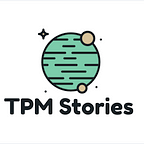TPM Stories — Sanika Oturkar from Google
Interviewed by Betty Luk
Sanika is a Technical Project Manager with a master’s in Mechanical Engineering and 9 years of industry experience in Engineering and Quality Management. She has extensive experience in leading cross-functional program teams to identify & resolve product issues, ease customer pain & reduce warranty costs by implementing robust solutions. She currently works at Google LLC, as a Quality Operations Technical Program Manager for Google’s Pixel device accessories where she has worked on Google’s flagship and first generation products such as the Pixel watch and Pixel accessories like the Pixel Buds and Phone Cases
Tell us about your career journey — how has your career transformed and how did you become a TPM?
At Cummins I started out as an integration engineer and later became a Continuous improvement engineer. Both of these roles required me to lead a team of cross-functional team members for both short and long term projects while managing tight timelines and often presenting to executives for status updates. My stint at Cummins gave me the best of both worlds — experience in leading cross-functional teams as well as driving root cause and analysis for technical problems. This helped me lay a strong foundation to perform a TPM role. When I applied to Google, I wanted to continue building on the same foundations and decided to apply for a Quality Operations TPM role which would also give me an opportunity to learn about the business aspects of a product while letting me do what I do best — solving technical problems.
What do you enjoy the most about being a TPM? Where do you think a TPM can add the most value?
The thing I most enjoy about being a TPM is that I get to connect the dots between the different functions and look at a problem/ project holistically. I get to ‘zoom in’ and ‘zoom out’ while solving a particular problem and see how the problem impacts the technical aspects as well as the business as a whole. I absolutely love the cross-functional aspect of being a TPM!
What is the most memorable program that you have driven as a TPM? What made it so memorable?
The most memorable program I drove as TPM was launching the Pixel 7 and 7 Pro Cases in 2023 . It was one of the first projects I led end-to-end in the consumer electronics world and it taught me so much about the product lifecycle and development of consumer electronics and introduced me to the fast paced nature of the business. It taught me how to look at product accessories in a different way and how they help to make the hero product ‘the phone’ (in this case) stand out amongst the competitor third party cases.
Your background is in mechanical engineering. How has that helped you in your TPM role?
A TPM won’t be an expert at every single subject but TPMs need to know how to ask the right questions and also how to approach a particular problem. Mechanical engineering is truly the mother of all branches since you can learn about so many different aspects of engineering through mechanical engineering. To name a few courses for example — Mechanical design, materials engineering, heat transfer, design for manufacturing, finite element analysis and scripting in matlab, introduction to Python, control engineering , sensors and signal processing etc. have helped lay a strong technical foundation which has taught me how to approach a problem and develop an engineering mindset.
You were at a company that specialized in engines and generators before moving to Google. What are the similarities and differences between the TPM roles at these companies?
That’s a great question and one that I get asked a lot! At Cummins Inc., I learnt about problem solving by applying Quality Six-sigma problem solving techniques. I also learnt about approaching a problem and navigating through ambiguity. I work on Google’s hardware products so I apply a lot of the same problem solving techniques and my stint at Cummins has enabled me to remain calm even in the face of ambiguity. The consumer electronics industry has a very fast paced environment and information gets stale very fast so you have to quickly grasp the new information and understand what that means for the products in terms of trade-offs.
What was that transition like moving to Google? Any learnings you can share?
At Google, I had to learn how to thrive in a fast paced environment and also learn about the consumer electronics industry and development of hardware products. At first I felt like an imposter being surrounded by the most talented and smart people out there. I started reaching out to my colleagues in different functions to learn about their role, how it fits in the overall product development phase. I also leveraged my managers and team members and asked questions about topics/ subjects/ terms that were new to me and asked them to provide me with some extra reading material. Slowly I became comfortable with not having to know everything and asking the right questions to drive clarity and to learn.
“Take a stand. Be known for your courage and confidence.” — Indra Nooyi.
TPMs — What’s your story? If you are interested in contributing or sharing your story, please reach out!
